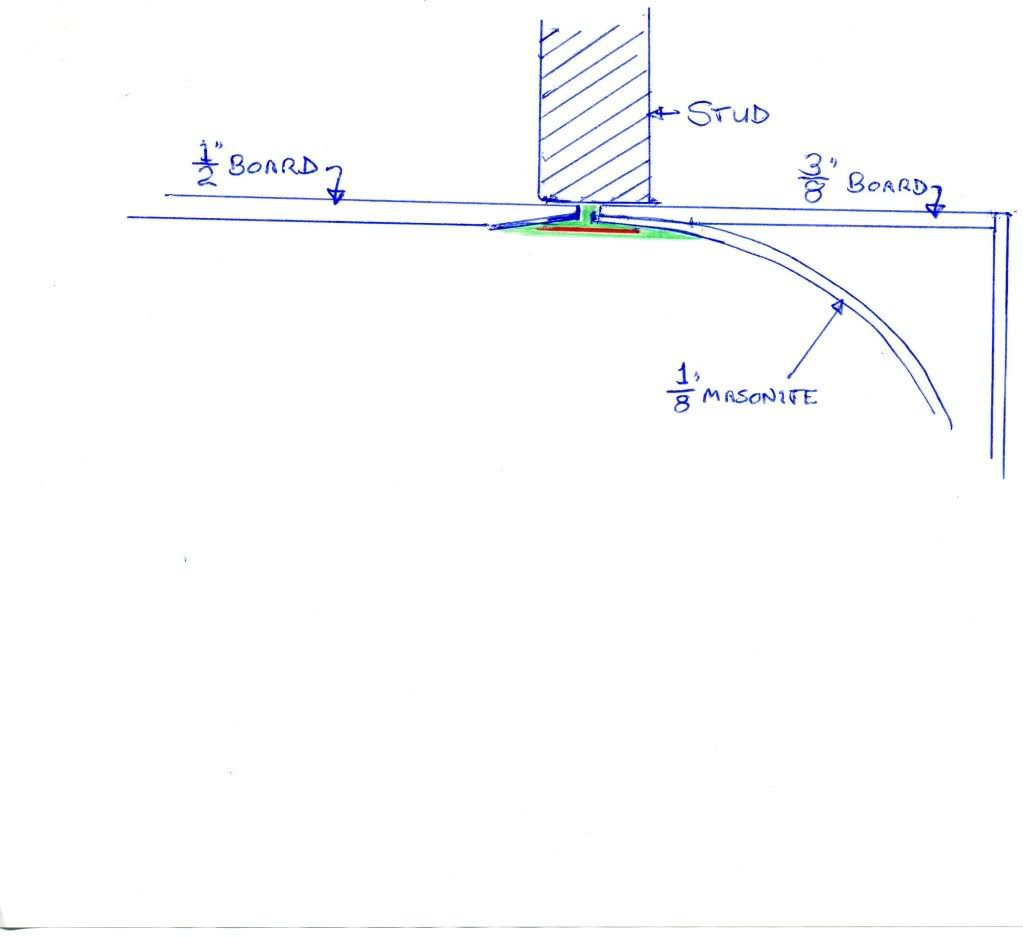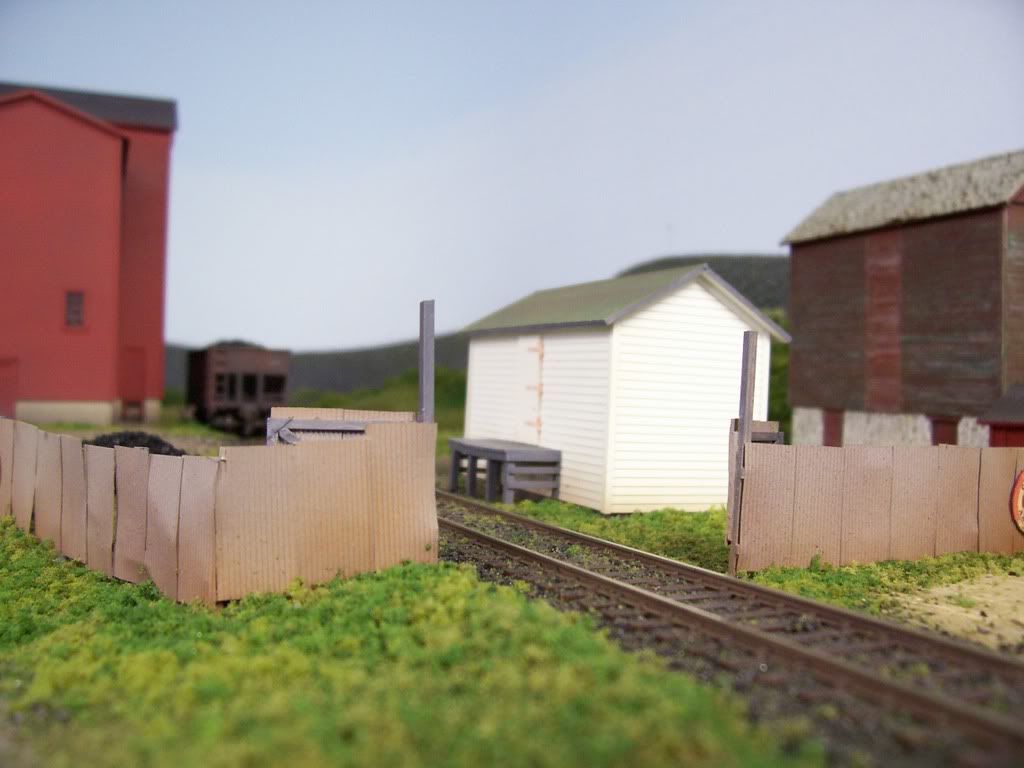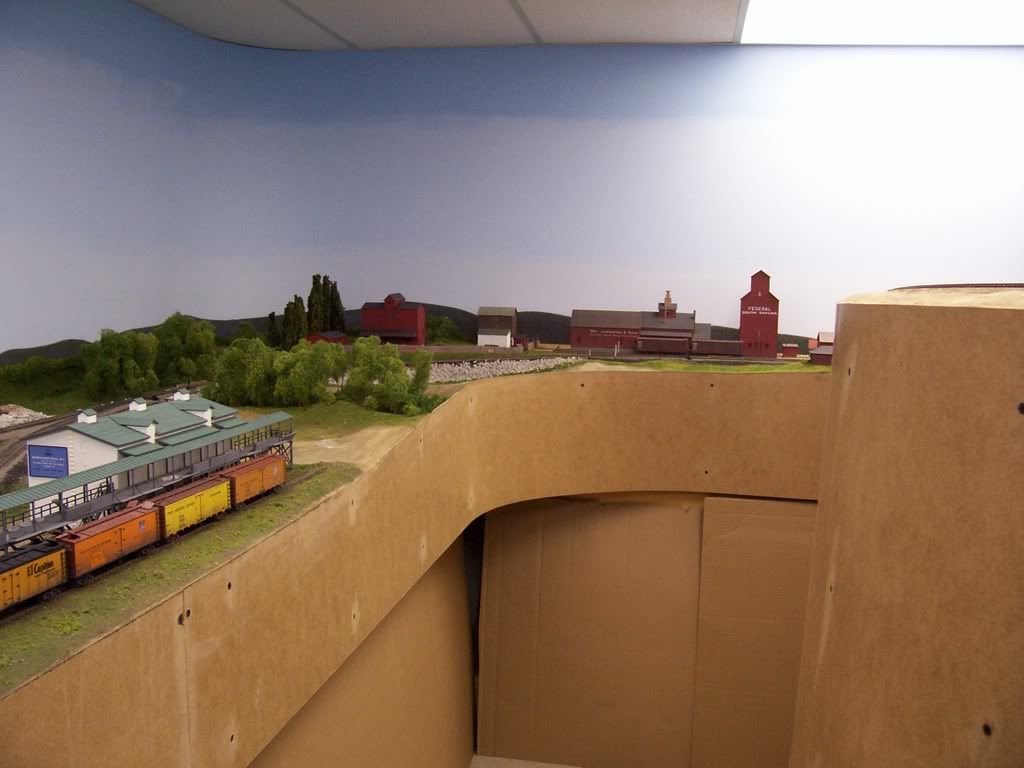I’m in the midst of redoing the lights in my MRR room, and am considering installing sheets of vapour barrier on the joists, above the lights to prevent dust from coming from the floor above. Considering how much dust I’m already generating in the room, would this stop very much at all? I’ve heard that a lot of dust can come from above floords, but does anyone have experience with this type of thing?
I am assuming the ceiling is finished. Anywhere there is a box for a light fixture it should have a cover over it. These are heavy plastic and cover the box above the drywall. This prevents insulation, dirt or whatever from making its way into the box and causing problems. It also stops dirt and dust and varmints from sneaking past the light box into the room whereupon they lower themselves down to the layout and have endless hours of fun riding your trains.[swg]
Sorry, I should clarify - The ceiling is unfinished, bare joists. Damn those dust varmints!
Are you in a basement? if so don’t worry about dust from above it is probably coming from the concrete, walls and floor, concrete spalls massive amounts of dust throughout your house, paint all concrete in your basement if possible this will prevent 80% of the dust all over your house. You may want to vacuum your whole basement, floor joists, top of concrete wall and every square inch of your basement in a new or old house.
The dust comes from you, from the floor, from pets, from heating ducts, from the floor above you, from airborne stuff that enters under/around the door and through windows. Every footfall in a room caused billows of floor dust to rise up, waft around you, into your lungs, and to settle on all horizontal surfaces nearby. Walking, itself, causes your clothing to rub against your skin, accelerating the process of ablation that your skin undergoes 24/7, whether you are in street clothes, pyjamas, or nude and towelling yourself off…or in bed.
Chances are excellent that some dust is generated by foot traffic above the train room. Flooring wears, dust of all kinds gets through wooden flooring, or if it is largely sealed, the rubbing on the joist tops below that flooring makes its way down…and down…
You can keep dust to a minimum, as suggested earlier, by sealing all surfaces with a good strong binder/paint/epoxy/sealant of another kind. The vapour barrier idea will undoubtedly help. In addition to the sealing of the surface, including the flooring, you must wipe the floor daily with a treated dry-mop designed for that application, the kind of treated material that grabs 90% of what is lying on the surface.
Crandell
I know the situation you are talking about. Dirt and dust will never stop coming from the ceiling and walls that are unfinished. Even if finished with paneling the problem will likely persist. I think the only way to really deal with the problem is to get it sealed with a proper drywall job. Many people have gone the cheap paneling route only to call in the drywall guy down the road. You could probably have it done in a weekend.
Plastic would not be effective unless completely airtight and that would be as much work as drywall. Besides plastic should only be used on outside walls as a vapour barrier. Plastic on the ceiling would end up being a moister collector. It could end up dripping down on the layout and be the beginning of mold problems for the whole house.
Watch a You-Tube video on installing drywall if you are unsure. Remember the sheets go on the horizontal, not vertical. Once you get to the sealing the joint stage call me back and I’ll tell you how to get the invisible seam.
Good luck.
There are two seams on my backdrop in this pic. Can you spot them? Go ahead and get as close as you want.[(-D]

Thanks for the comments, everyone. At this point I’ve decided to leave it, as this is not a permanent layout location - I’ll only be in this house a few more years and have no plans to finish the room. Since the layout is already half built on the first level, sealing the floor is out of the question. The plan is now to prepare the next room ahead of time!
I’ll be posting a lot of progress in the coming weeks and months, so if you’re interested please bookmark or subscribe to my blog to get updates.
If you seal up the room you also need to be sure that it is also well ventilated with a good filtering system and a humidifier/de-humidifier. You don’t want to trap all the air in the basement, especially if you live in an area where radon is a problem. Remember, warm, moist air will quickly cause mold if not ventilated.
Not an expert, but I’ve seen a lot of episodes of This Old House and Holmes on Holmes.
Bruce LA
Trainboy,
Crandell hit the nail on the head, as did the other responders to your post. The air we live in is just plain full of particles that land on your railroad. I live in cow country, and have pretty much given up on trying to keep the dirt out of this house - ain’t gonna happen. Then there are the bugs, the ones that fly and the ones that seek to trap the ones that fly. Along with all the skills we develop as model railroaders, you have to list trying to keep a tidy train room among them. I am still working to master that one. Do your best and have fun.
Wilton.
Most drywall installers do indeed put up the boards horizontally, but that’s mainly to decrease the amount of taping required. However, for the average guy doing it himself, you’ll likely get better results boarding vertically, as there are no un-tapered butt-joints to conceal.
It was also easy to create coved corners, an important consideration in a room with ten corners:


Here’s the same general area as the previous photo - I’ve since added more lighting here which has brightened the whole area and removed any shadows.

My layout is in the basement, too, but all walls are drywalled (vertically [swg] ) and there’s a suspended ceiling in place. It’s very apparent that there’s a lot of dirt and dust filtering down from the floor above, though, as it collects on the upper side of the clear panels beneath the room’s fluorescent light fixtures. Every once in a while I’ll lift an adjacent tile and vacuum the dirt from the clear panels. The cement floor is unpainted, but creates very little dust, as it’s vacuumed regularly - never swept.
In over 20 years, I have never had to clean track in the conventional sense of the word, although I do occasionally vacuum the right-of-way and the structures.
Well if the location is temporary there could be a temporary solution. Before I finished my basement and started a new layout, I put up a blue tarp up over my old layout. I stapled it to the wooden rafters. Like the others guys said, in an unfinished basement, dust comes from everywhere. But at least I was able to prevent dirt or what have you falling from the ceiling. When it was time to remodel and tear down the layout, I ended by removing the tarp from the ceiling. I was amazed at all the debris from the ceiling I was able to catch. Not to mention the dry hard water spots I saw from a few pipes Oh as for the lights, I simply put up some inexpensive track lighting below the tarp.
Joe C